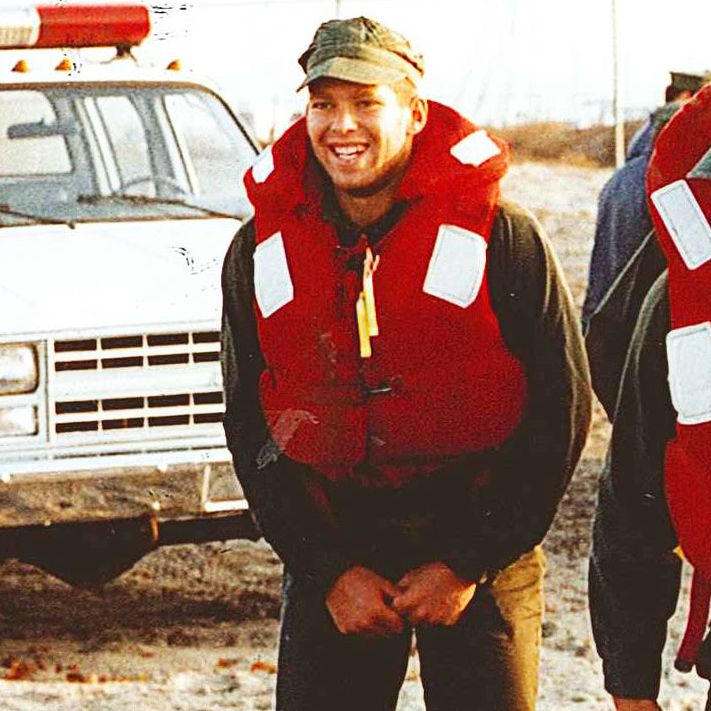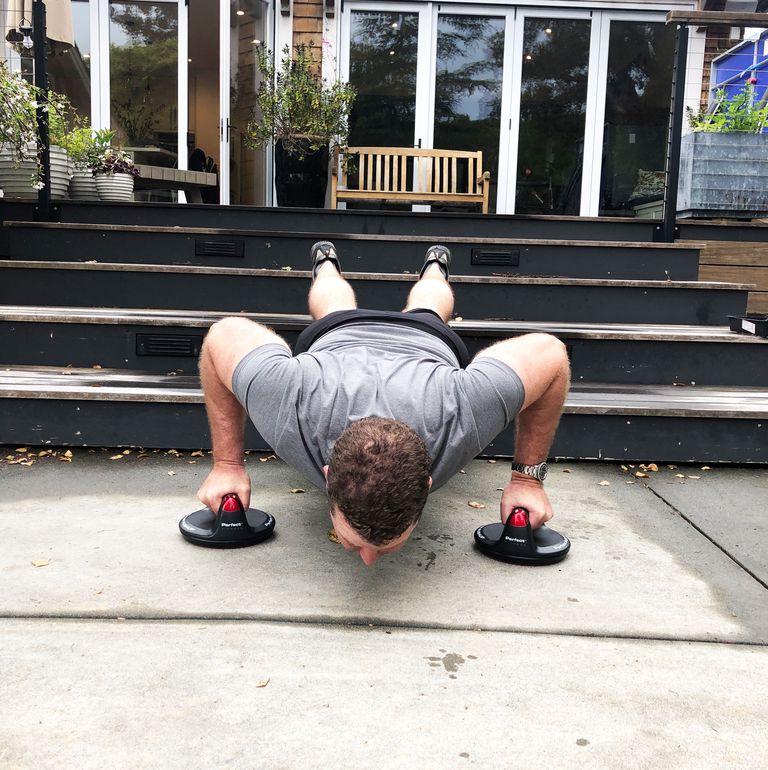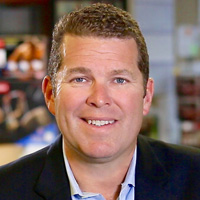Muscle tips and winning strategies from the author of the new book Unstoppable Teams.
Former Navy SEAL and inventor of the Perfect Pushup Alden Mills has found success in so many different arenas in life that it’s clear he is much more than just an ambitious badass. In fact, Mills’ greatest asset seems to be his critical thinking skills, in which he is able take stock of a challenge and its various moving parts and devise a plan to overcome it in the time it takes the rest of us to send a text message. Hearing Mills describe it, he even thought his way through the most physically grueling aspects of SEAL training. Critical thinking certainly propelled him through business school, and guided him toward his first fitness invention.
All the while, Mills was taking stock of the tools he was employing to achieve such great success and began sharing them through speaking tours and his wildly popular first book Be Unstoppable. His second book, Unstoppable Teams, was just released this month and he once again uses his experience leading the most elite fighting force in the world, as well as his success as an inventor and entrepreneur, to extoll the power of working for the greater good—for the people and the goals that are beyond just ourselves. For Mills, the physical and mental are inseparable. Here, he shares some of the heady wisdom that is behind his success in training, in business, and beyond.
Make Friends With Your Enemy
“When I started rowing as a teenager, I loved making the boat go fast, but I hated the ergometer [rowing machine],” says Mills. “But I had to make friends with it if I wanted to be good at rowing.” Over the years, Mills even created a name for the place he goes to face that which makes him most uncomfortable: The Pain Cave. “It’s a place where you really look inside yourself,” he explains. “I always pictured this wall, where I don’t know what’s on the other side. I’d push myself mentally — make a mental game of it — unsure of what was going to happen when I reached the other side.”
Ruin a Perfectly Nice Day at the Beach
There are few images more iconic than that of a group of soaked and sandy Navy SEALS, shivering as they get pounded by frigid surf. Mills remembers those days well, but also remembers how he and his team would turn the beach into a gym. “It’s the perfect place for a run, swim, burpee drill,” he says. Mills says they would start by putting a couple buoys out in the water, just past the surf. Then they would run a short sprint to the water, swim out to the buoys and back, then run to the start and do a set of 20 burpees. Then repeat 3 to 10 times.
Use Balance to Build SEAL Strength
When Mills was leading a platoon of SEALS in the 90s, his commanders told him there would be a group of civilian exercise physiologists following his team around, observing their workouts. “They actually started whispering things to us, literally while we were working out, about how to correct our movements,” he remembers. Mills and the other SEALS were used to doing old-school bodybuilding moves, using muscle isolation, but very few opposing exercises. “We’d do a thousand situps, but zero back extensions — we’d have super strong abs but weak lower backs,” he remembers. “We were creating muscle imbalances and that’s when we started doing more functional training, with equal and opposite muscle reactions.”
See the World as Your Gym
As a SEAL, Mills was often forced to improvise with what he had around him, when it came to keeping fit. But he insists the only thing you really ever need, anyway, is your own body. “The large majority of SEAL training was done on what we call ‘The Grinder’, which is nothing more than a large square of asphalt with a pair of white fins painted on it — it’s not rocket science,” he says. “We would do lunges, jumping jacks, burpees — grab a tree limb, do some pullups, and you’re working most muscles there. When I lived in a 12 story apartment building in Spain, I was training to climb Mt Elbrus in Russia. I’d just put 50 pounds on my back and run the stairs.” Mills says the Perfect Pushup was in fact born when he used towels around his fists to allow them to rotate naturally as he pushed away from the floor.
Think Beyond the Goal

Mills remembers there being two types of guys in SEAL training: those who had been in team situations that required dedication and arduous hours of athletic training in pursuit of something greater— water polo players, wrestlers — and those who stayed focused only on the task in front of them. The problem is, when that task changes, the team members in the second group had trouble adjusting. “The team athletes were the ones that said ‘okay, I don’t care what they throw out me’,” he remembers. “The others would train for a test, then, when the test changed or got harder, these guys would freak out.” Mills says that it was a sense of working toward the greater goal and for the team that helped guys succeed.
Take the Pyramid Everywhere You Go
“It’s my all-time favorite workout,” says Mills of this routine that involves three simple moves that you can do anywhere, any time. Mills’ favorite pyramid includes a pushup, a squat, then a pullup. You simply start with one of each and work your way up to six of each, and then back down again. “We call it a double tap six,” says Mills. “And you can’t do them fast—everyone wants to jump through it, but you need to do each movement slowly.”
Start Doing Bucket-List Workouts
Mills says he hates going to the gym without any purpose, but it’s still important to keep fit. So, now he chooses a grand goal in the future — right now it’s mountain climbing, as he recently ticked off Denali and Elbrus, the highest peaks in North America and Europe, respectively — and all his workouts are in service of his goal. “I started training for life bucket list experiences and these days I climb a mountain a year,” he says. “I’ve just really enjoyed putting some weight on my back, going outside and doing some long ‘active meditation’ workouts.”

Make Work a Little More Like a Workout
In the short time it took him for Mills to do this interview, he cleaned up his entire backyard. “When I sit, I’m just not nearly as energetic or creative,” he explains. “I have a standing desk — I actually spend the majority of my time standing — and I do a lot of professional speaking now, which is like an athletic event. I wore my heart rate monitor on stage during an hour-long keynote recently and in that 60 minute period, my average heart rate was 129, and I burned just under a thousand calories.” Mills says that if he is really feeling stuck he’ll take it a step further and go do an actual workout to get the endorphins flowing again. “I just go for a walk or get on the ergometer,” he says.
Keep Your Finger Close to the F*ck-it Button
Mills says that in every aspect of his life, there are moments when it is smarter to stop processing and move on. “When I’m writing, for instance, or inventing a new product, I have this f*ck-it button in my head,” he explains. “Every time I’d stop and ask ‘wait, is that a run-on sentence? Boom, f*ck it. Keep writing. It’s used when you just decide to move on and look at something later — and you can apply it to anything in life.”
Use the Negative to Inspire You

Alden Mills demonstrates the perfect pushup.
For all the self-help BS out there that says to always think positive, Mills has found an equally effective motivator in the negative. He calls it an Outcome Account and it’s a quick survey of exactly what will happen — how he will feel and who it will effect — if he does not accomplish a particular goal. “I do also think about how I will fee if I accomplish something, but when I was in some of my lowest, weakest moments, it was the negative that inspired me more than the positive,” he explains. “It was thinking about hearing people say ‘I told you you wouldn’t have made it’.”
Source: Men’s Health Magazine



